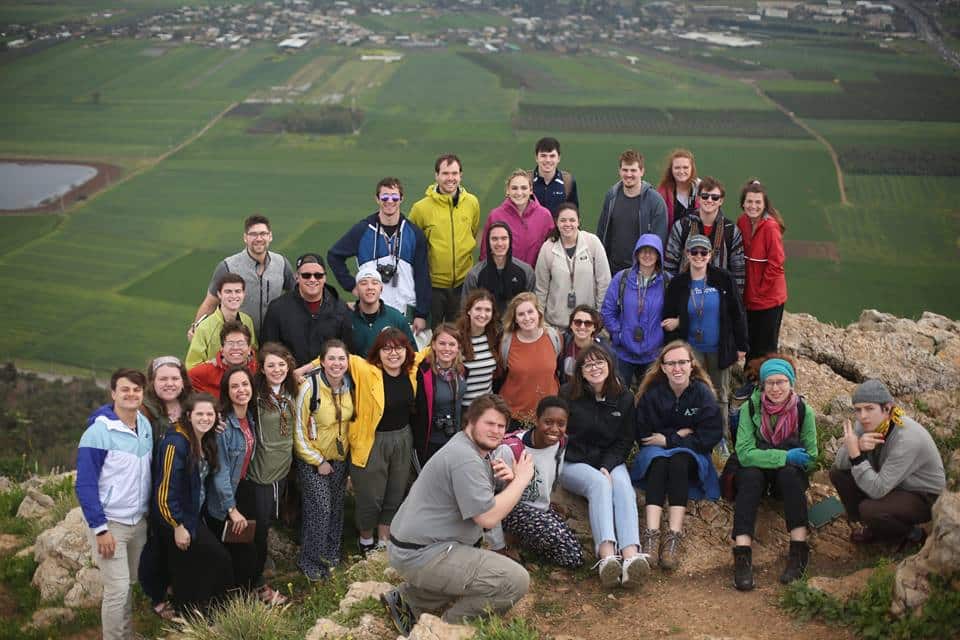
Hey everyone! If you haven’t heard yet, we just got back from Israel! Take a look below to read some student takeaways.
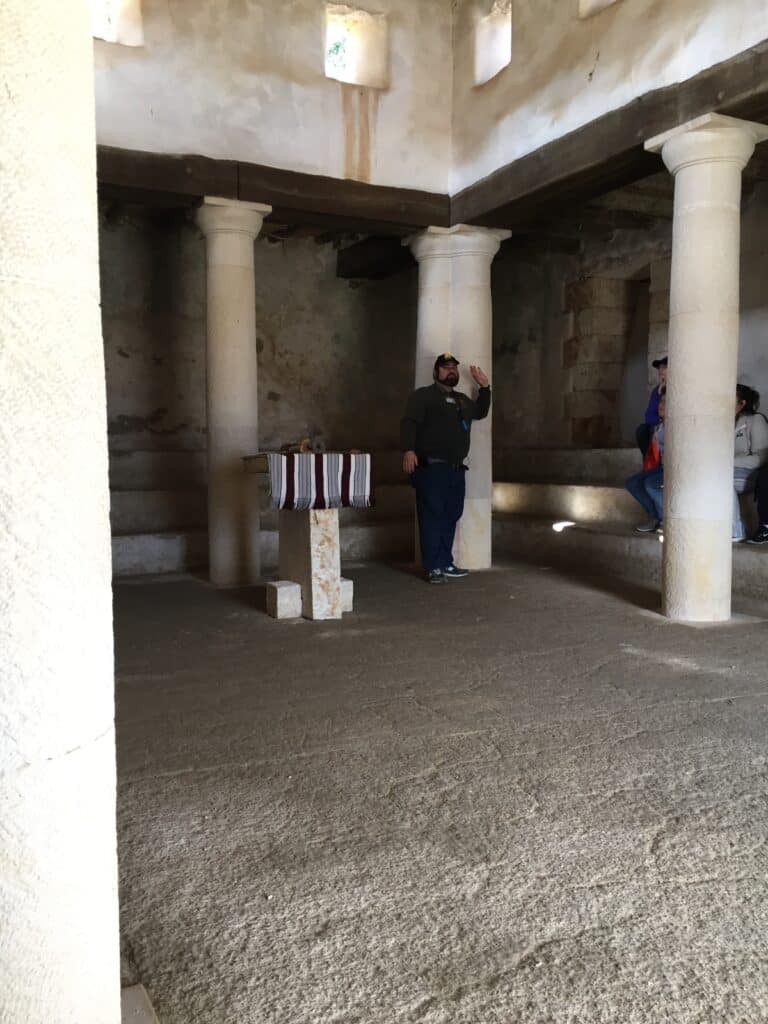
-Brandon Bechtold
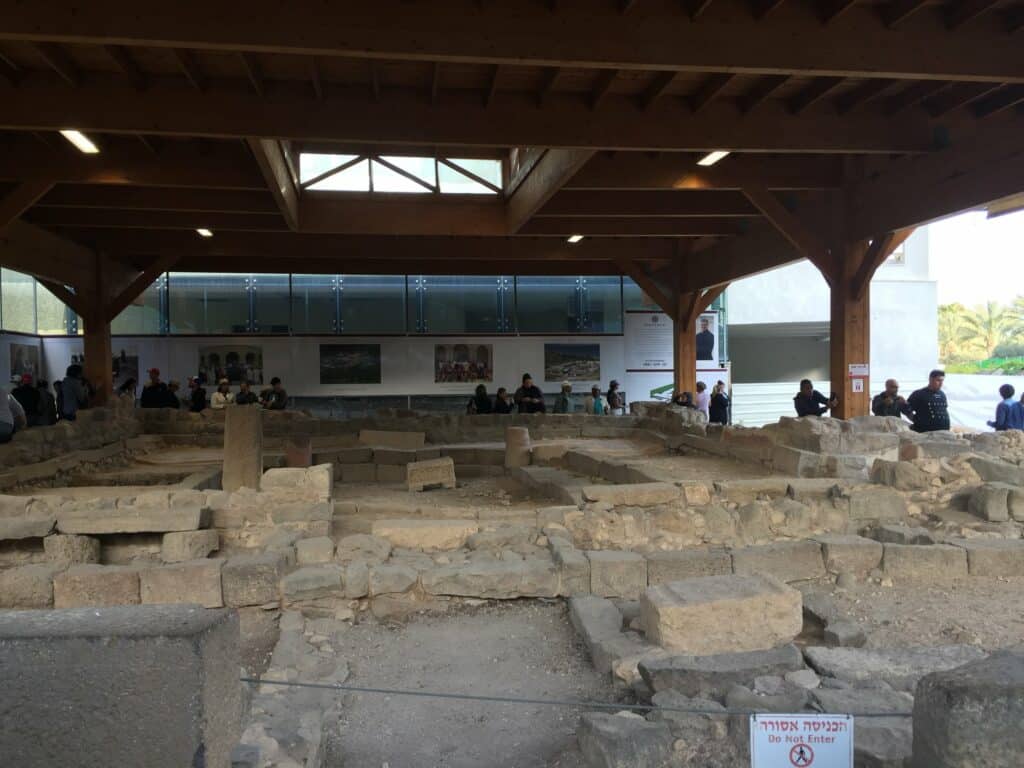
Wow! Magdala was one of my favorite sites we went to on the Israel Trip! I loved seeing the 1st century synagogue that Jesus most likely taught. It was so amazing seeing the Bible come to life and being able to picture Mary Magdalene there following Jesus. You hear about Mary in the Bible, but being able to see where she lived was such a unique experience.
Being able to sing “How Great Thou Art” in Magdala is one of my favorite memories because it was so beautiful seeing and hearing everyone in OneLife come together and worship our Lord. Through learning more about Mary Magdalene and Magdala, I was shown the faith that she had to have in following Jesus and telling others about Him. In my time in Israel, the Lord was teaching me about faith, and Magdala was where I saw it come to life.
-Anna McEvoy
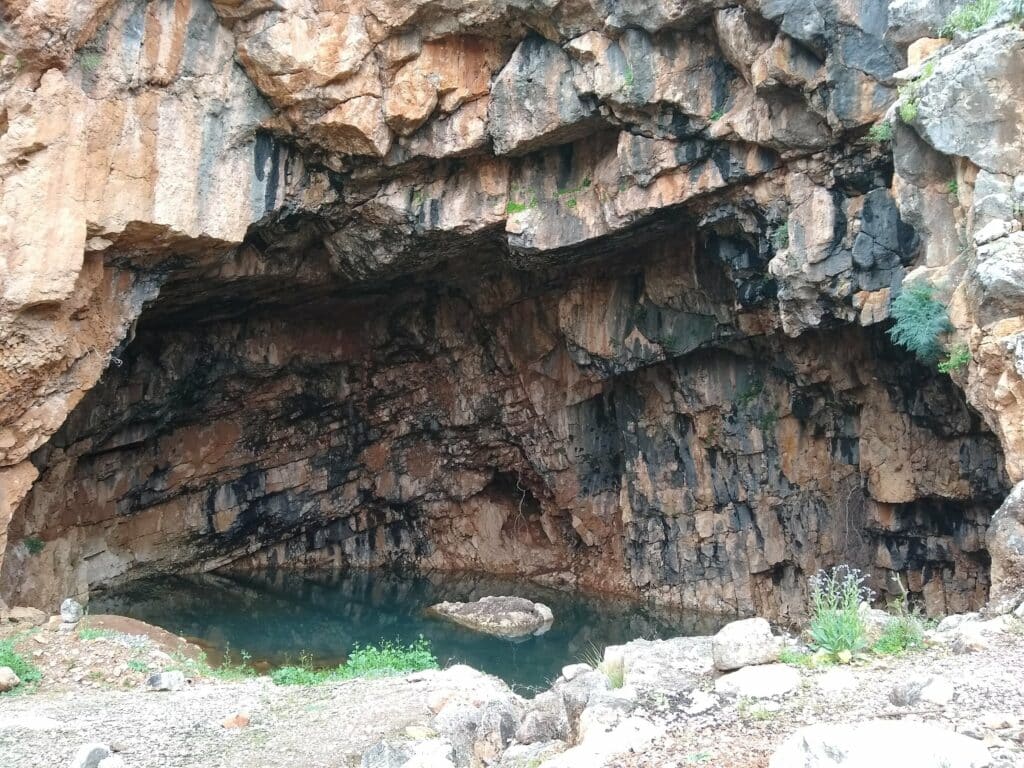
Caesarea Philippi… the place where people threw sacrifices into a cave dedicated to Pan, the Greek god of fertility. His name is from which the word panic is derived. Next to Pan’s cave, people could revere the gods Echo and Hermes at shrines chiseled in the rock. About a six-hour walk away stands Mount Hermon, the highest point in Israel. For Baal-worshippers, who believed the higher the place the holier, Mount Hermon provided a perfect place of worship.
Caesarea Philippi… a place renowned for its worship of practically every god but Yahweh, whose legacy of idol worship still remains today for visitors to clearly see. Why do we find Jesus and His disciples here on one memorable occasion? Removed from the cities of Israel, the synagogues, the Jewish culture and beliefs, Jesus asks His disciples this question: “Who do you say that I am?” And Peter replies: “the Christ.”
As I look up at the cliff in front of me, Jesus naming Peter “the rock” echoes in my mind. The idea of an unshakable foundation for the church now takes a new shape in my mind. The Gate of Hades – the other name associated with Pan’s cave – stands right in front of me. The power that cave held – that caused so many sacrifices to be offered to a pagan god of fear – would never be able to overcome Christ’s church. But then, why is it that I can only see the shrines and Pan’s cave today? Why is my God invisible, when the sins of the past are still very present?
I realized that my God is very alive, in the parts of His beautiful creation that seem overcome by sin, in the people all around me, everywhere. I thank God that He is superior to the sin and the pain and the mess, too, not only over the beautiful and the good. When seeing brokenness, I can rejoice in knowing that God will redeem and renew the goodness. I can know that ultimately, no matter who seems to be winning, God has the ultimate authority and the final say.
-Sarah Ziegler
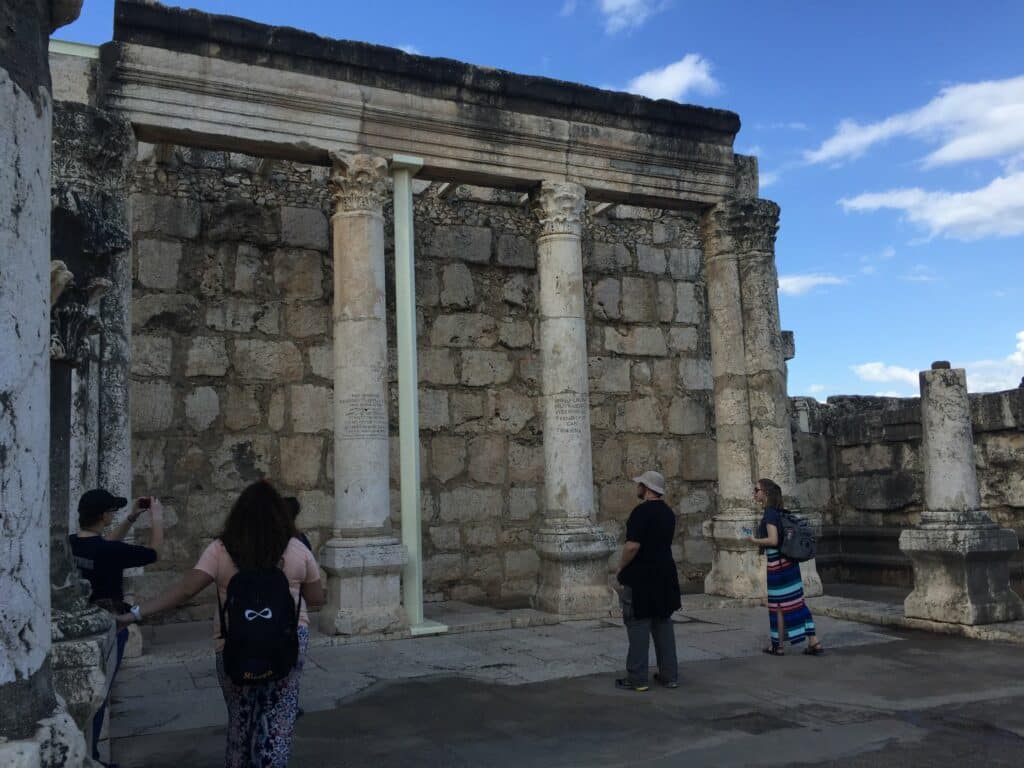
As I look around Capernaum, I can see why Jesus chose this as his “home base.” Capernaum sits right on the edge of the Sea of Galilee, overlooking the whole area of Jesus’ main ministry. The ruins of Capernaum encompass a synagogue, the house of Peter’s mother-in-law, and most of the ancient village.
Although there are only ruins left, it is not hard to picture Jesus walking around here and teaching in the synagogue or under the trees by the water. It’s crazy to think that it was right where we stood that Jesus healed the paralytic that came through a roof (Mark 2:1-12) as well as demonstrated his authority over all things in expelling demons (Luke 4:31-37).
Capernaum was another reminder of Jesus’ perfect example of authority and vulnerability. Although beautiful, Capernaum was just another small town on Galilee. It was occupied by fishermen and the average working members of Jewish society. Jesus didn’t come and live in Jerusalem or in some palace. He came and dwelt among the vulnerable and sick, the demon-possessed and working class.
Although Jesus lived in a humble place, he exerted perfect authority over all things. In Mark 1:21-22, it says that His listeners in Capernaum were “amazed at his teaching” and even the demon in the possessed man recognized Jesus as the “Holy one of God.”
Jesus came as a humble man, but also as the almighty bearer of life changing news. He may have lived in Capernaum 2000 years ago, but his message is just as relevant now as it was then. What an amazing opportunity to stand where Jesus healed people and began to make all things new, knowing that he has healed me and is making me new.
-Elwyn Shea
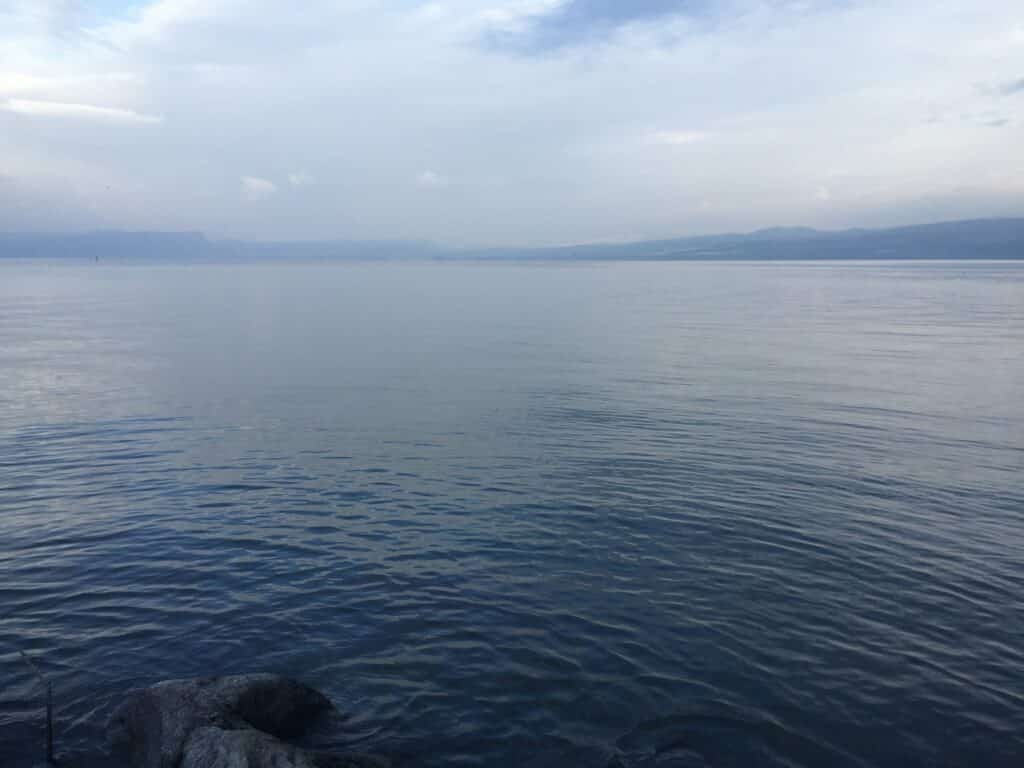
One of the symptoms of being a teenager is oversleeping. Believe me, I am one. And I learned that if you struggle with it, it follows you wherever you go, even to Israel. So the morning I found myself down on the shore of the Sea of Galilee a half an hour later than planned, I was just a little frustrated with myself. Surprisingly though, the unplanned ‘inconvenience’ turned into a pretty great gift. Isn’t it funny how God does things like that?
I found myself sitting alone on some rocks by the waters edge, enjoying the peace of the quiet morning. At some point, God and I started talking. I’ve been processing what it means to trust Him recently. What it means to truly trust. And it hit me that this was one place Peter’s faith was tested. It was on these very waters where Peter trusted Jesus enough to step out of a boat into stormy waters. He kept his eyes on Jesus and walked on water…until his faith wavered. Until a seed of doubt creeped in and he started to sink. How often do I, in the face of a storm in my life, take the risk of stepping out in faith? Do I move towards the One who calms the wind and waters, or do I hide my face in fear in the back of the boat? And very clearly, I heard Him say, “Amara, lay it down. Trust me. I love you far too much to want you to live in your worry.”
The realization that surrendering to Him is something I need to choose daily hit me pretty hard. I need to be okay with giving what plagues my mind up to Him. The sovereign, almighty God of the universe loves me with an outrageous love of another kind. And if I do falter and start to sink, He loves me enough to reach out and rescue me. Every. Single. Time.
-Amara Sherman
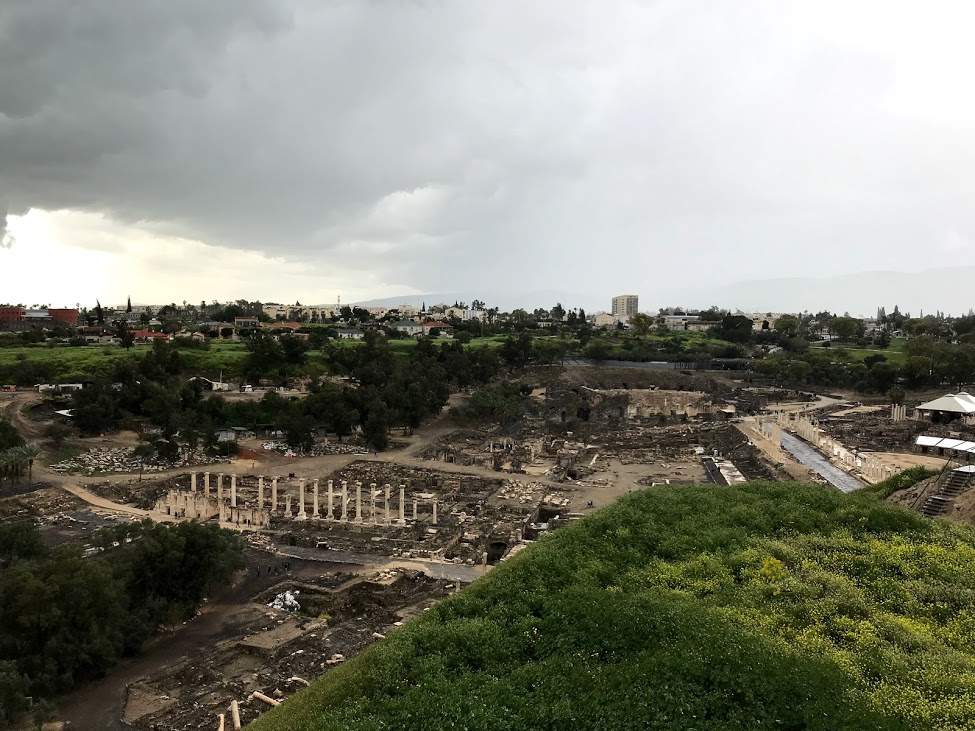
Beit Shean was essentially a giant historical playground. The vastness of the ruins to be explored was thrillingly overwhelming. The beautifully preserved city was lined with mustard flowers and topped with grey storm clouds. The goodness of God was on full display. I didn’t come to a poignant and insightful revelation about God while exploring this site: I simply rejoiced in the loveliness around me. And in doing so, I learned more about the character of the God I serve. He creates beauty so we can delight in it, beauty in itself is a purpose. He loved to watch us, his children, run around shrieking in the rain, marveling in the colors of the mosaics and climbing under the ruins to discover ancient homes. I was struck by the kindness of God to lead archaeologists to discover these ruins so we could learn from them and enjoy them. He delights to give us good gifts, and we should delight in them.
-Claudia Heitland
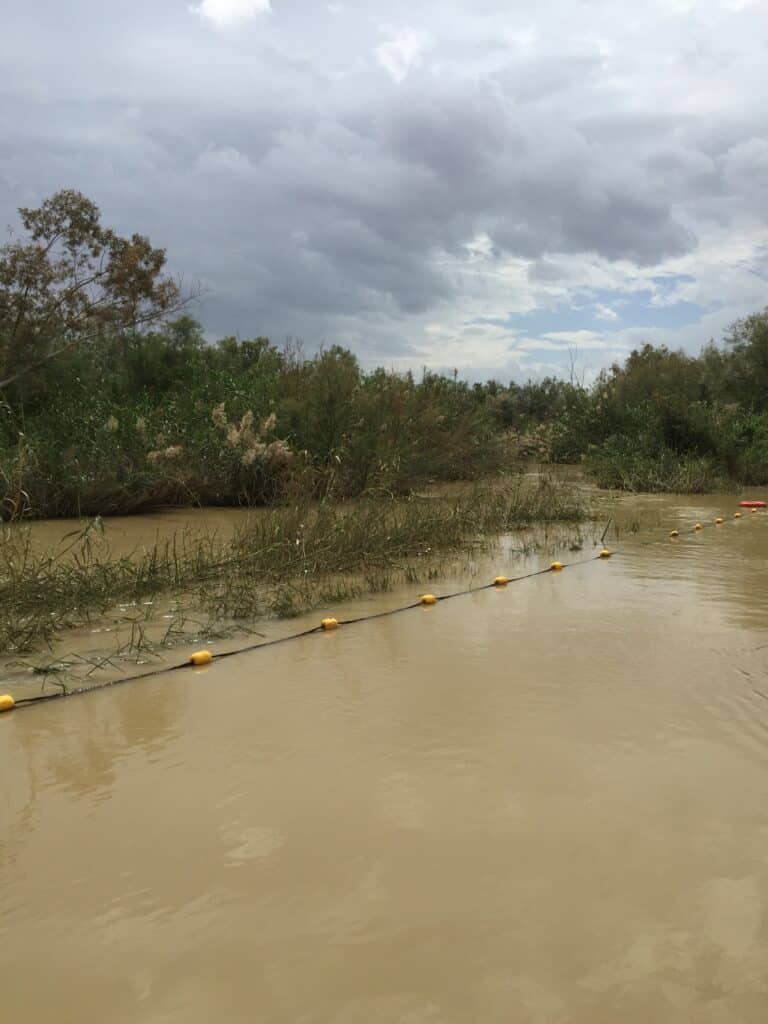
Bethany Beyond Jordan
The Wilderness is a place to which we should run.
Jesus starts his ministry in his hometown Nazareth, but he gets threatened to be thrown off the cliff on Mount precipice, which is in Nazareth. He flees to Bethany Beyond the Jordan, which is in the Judean Wilderness. The interesting thing is that the leaders throughout Israel’s history were put into the wilderness by God at some point in time, BUT Jesus, on the other hand, flees to the wilderness in a time of desperation. The very place that hurts him — this dry, rocky, uninhabited desert — is the place he flees.
The place that hurts us also shapes us. We should flee to the wilderness knowing we have a guide (the Shepherd), and that the very essence of comfort, peace, love, and strength is from feeling hopeless in the midst of yourself. When we lose ourselves, we have really gained ourselves in our true identity. Jesus did this knowing it would make Him stronger to carry out his mission of salvation.
This is also the place Jesus was baptized, and although Bethany Beyond the Jordan wasn’t the prettiest site, there were tons of people there when we visited. Why? Simply for that very reason that Jesus fled there. Life begins where we give ourselves to Christ. Yes, we lose ourselves, but we really have gained the whole world.
-Matt Harling
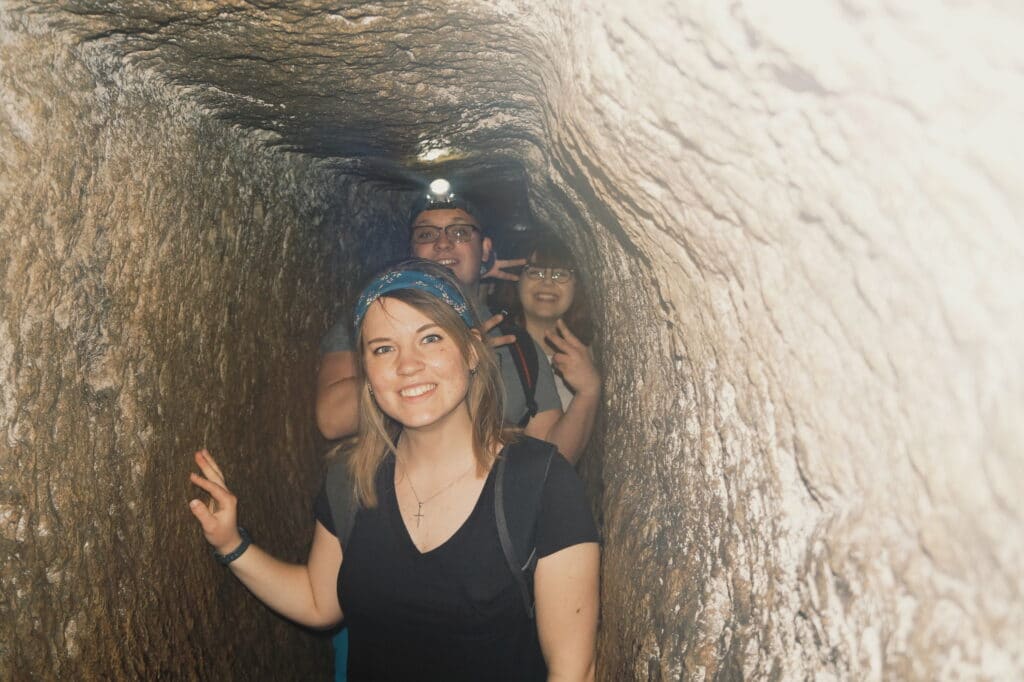
My sites were the City of David, the Temple Mount Steps, and Hezekiah’s Tunnel, but I’ll be focusing more on the last one, for that’s the one I did the research for. Hezekiah’s Tunnel is mentioned in 2 Chronicles 32:2-4 and 2 Kings 20:20. I am learning so much about the Bible, Jesus, and all the history behind things. Israel taught me that there’s solid proof that events in the Bible happened, and that people who doubt these things should seriously check this out. I, myself, am a huge critic, but this trip to Israel really helped me enhance my relationship with God, because there was solid proof, yes, but also because it was evident in the people all around me. All I had to do was let loose a little bit and a whole world of opportunities sprang out at me. Going to Israel gave me a newfound respect of the ancient people who took time to make records of things happening, just for us to discover. That stuff is not an accident. I love all that God revealed to me there, good or bad.
I learned a lot from our tour guide and what he taught was amazing, so I’ll try to narrow it down. He really taught us about the Hebrew/Arabic culture in those days and in modern times, which was very fascinating. He also told us a TON about Jesus, and the context in which he was talking. For example, when he tells the Pharisees about the Good Samaritan, we all know it took place in the wilderness, right? But our tour guide literally took us to that same wilderness desert Jesus was talking about, and really put into perspective on just how much “in the wilderness” it was, and how dangerous it was; because of robbers and thirst alike. That was an awesome experience.
God is revealing himself to me through other people and my relationships with them. I previously did not realize how much I affect people’s attitudes when I’m feeling down, and these experiences God has shown me in One Life help me to talk about things in a better, healthier way. I no longer hold onto my bitterness as long as I normally did and have thus had better relationships with my peers.
-Sarah Stille
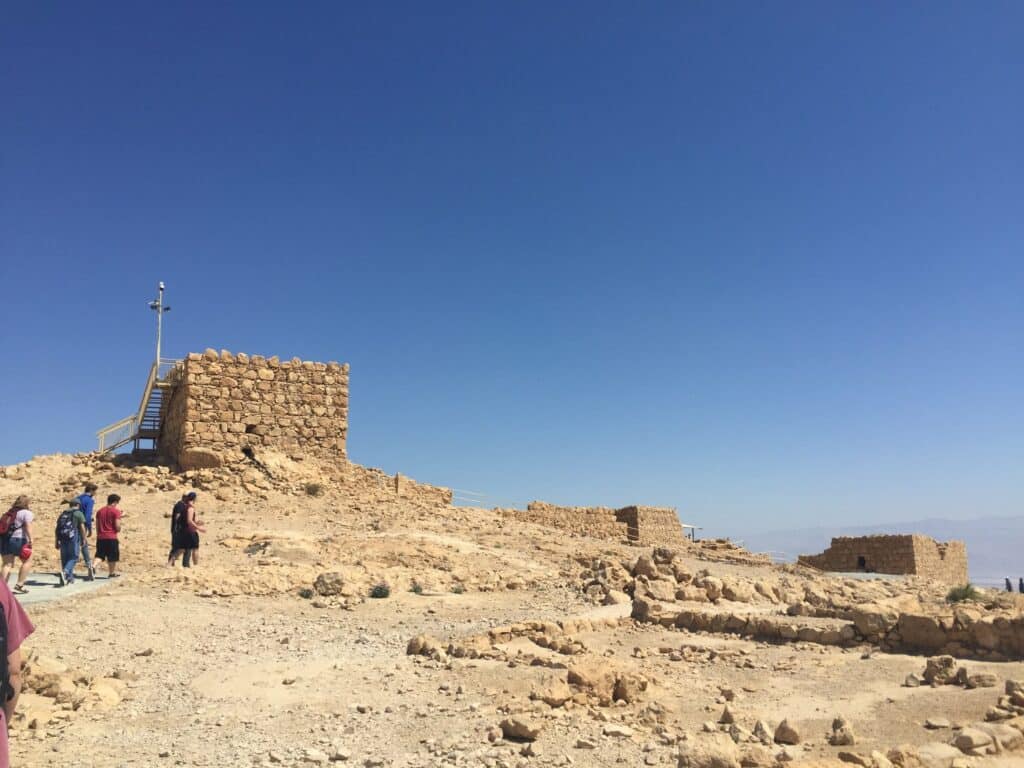
Masada, a palace and stronghold built by Herod in the Judean wilderness. A palace built to provide refuge, protection, and comfort to those inside. As our group gazed out at the desert from the top of the ruins left behind and listened to stories from the past I began to think about the lyrics “A mighty fortress is our God, a bulwark never failing”-Martin Luther. In preparation for and during the trip our class was assigned to read The Bible and The Land written by Gary M. Burge. Gary helped me see how God’s characteristics can be found in the land. Just like Masada provided rest and refuge for those who hid inside, Christ is the Rock unchanging, providing me constant refuge (Psalm 18:2).
-Elise Epp
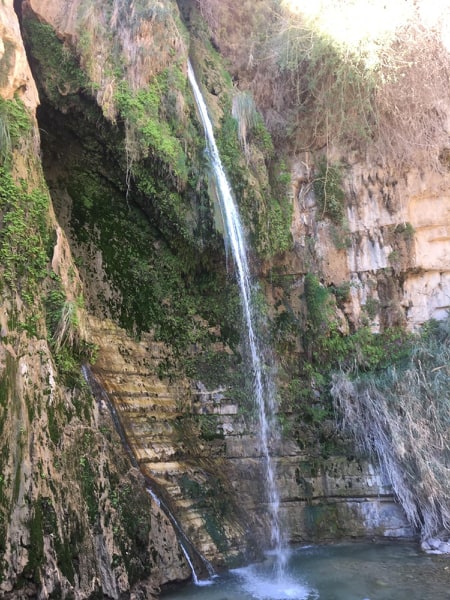
Ein Gedi
Just think, David needed a place of refuge in the wilderness, and fresh water to drink from. In the desert, this is not a common thing… but God knew what David needed, and so He placed a fresh water spring in the middle of the desert to provide for David and his men.
As I was reflecting on my experience, here I was thinking, So this is all really cool information, but how does this all apply to my life? Does it apply to my life in any way? Or is just a really cool location with a really cool story about God providing for His children?
The answer to my question was in the question. It has everything to do with me because itʼs a reminder of God and his faithfulness. When I am running from the world, God provides refuge for me in Him. God is my refuge, and my shelter when things are hard. He does not leave you to walk the desert alone. Instead, He has promised to always be there, to walk in the desert with you and to provide for you in times of need.
-Mackenzie Edman
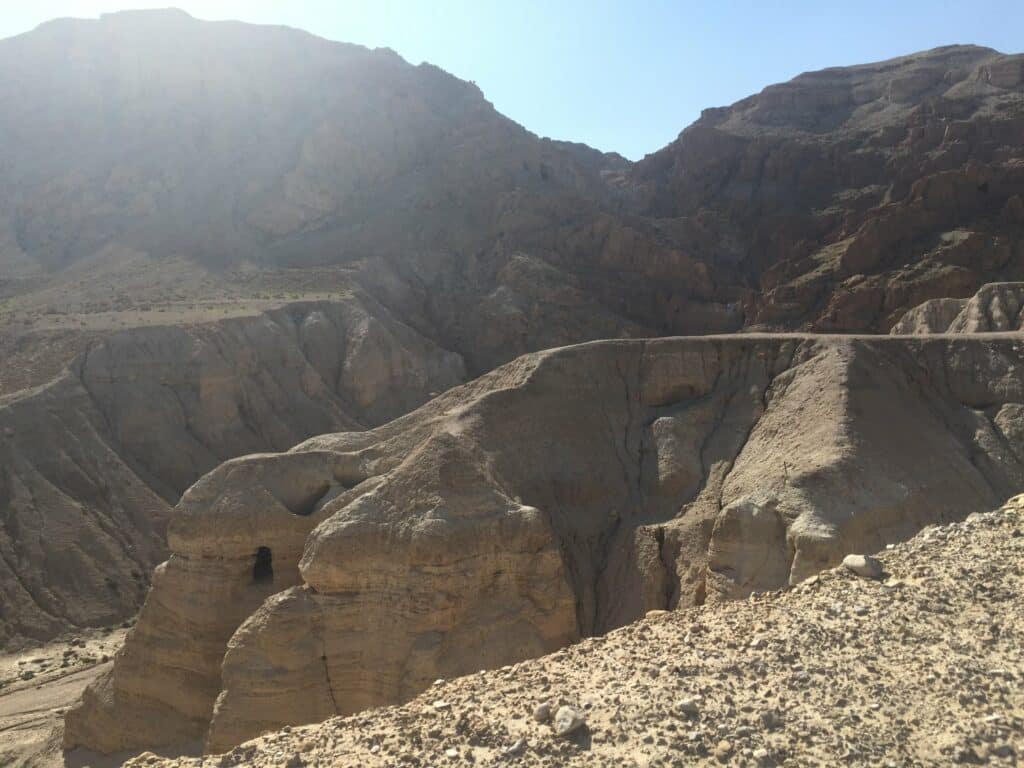
Qumran has the oldest written record of the Old Testament in the world, but archaeologists have found more than just the Dead Sea Scrolls. They are now finding other things belonging to the Essenes. The buildings we saw being excavated were all for public use. Because the Essenes were all male, they adopted orphans so the group could continue to grow. Some believe that John the Baptist was adopted by them. I’m amazed that the Dead Sea Scrolls weren’t found until 1946.
God is revealing himself to me through the beauty of this area. Even though it is in the wilderness, it is still beautiful.
-Isaiah Stoner
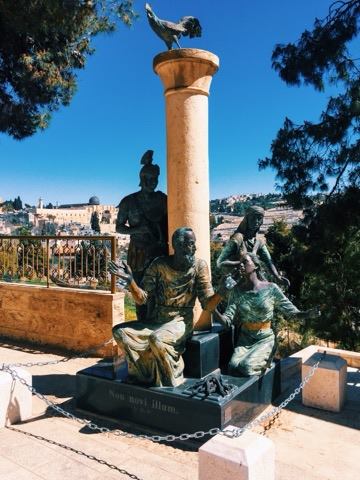
When we arrive at St. Peter in Gallicantu the morning is pretty much perfect. Sunny, 70s, and a slight breeze. A serene Jerusalem sits before us at the base of Mt. Zion. The church itself is surrounded by gardens full of flowers, shrubbery, and cacti. The scene before me is the complete opposite of what it was thousands of years ago. You might not know what happened here. You may have no idea what St. Peter in Gallicantu even is.
Let me first explain the events that took place here. In the Bible Jesus predicts Peter will deny knowing him and being associated with him. Peter (as any of us would) denies his future denial. But Jesus has a knack for knowing the future (he is God after all) and Peter does in fact, deny Him. Not long after this prediction Jesus prays in the garden, is betrayed by Judas, and is arrested.
Luke 22:54-60
“Then they seized him and led him away, bringing him into the high priest’s house, and Peter was following at a distance. And when they had kindled a fire in the middle of the courtyard and sat down together, Peter sat down among them. Then a servant girl, seeing him as he sat in the light and looking closely at him, said, “This man also was with him.” But he denied it, saying, “Woman, I do not know him.” And a little later someone else saw him and said, “You also are one of them.” But Peter said, “Man, I am not.” And after an interval of about an hour still another insisted, saying, “Certainly this man also was with him, for he too is a Galilean.” But Peter said, “Man, I do not know what you are talking about”.”
The scene closes with the iconic rooster crowing and Peter running away in tears. It’s absolutely awful. St. Peter in Gallicantu is where they think it all went down. St. Peter in Gallicantu is a church built to commemorate the denial. Below the church is an ancient jail thought to be where Jesus was held the night of his arrest. On the property is a statue showing Peter, a Roman soldier, a servant girl, and a rooster. The name Gallicantu is Latin for cockcrow (which is basically a rooster).
Despite these awful events I was amazed at how much hope was depicted around me. The church had an amazing amount of mosaics inside and outside of the building. They not only depicted the rejection but the reconciliation that happens later in John 21.15-19.
“When they had finished eating, Jesus said to Simon Peter, “Simon son of John, do you love me more than these?”
“Yes, Lord,” he said, “you know that I love you.”
Jesus said, “Feed my lambs.”
Again Jesus said, “Simon son of John, do you love me?”
He answered, “Yes, Lord, you know that I love you.”
Jesus said, “Take care of my sheep.”
The third time he said to him, “Simon son of John, do you love me?”
Peter was hurt because Jesus asked him the third time, “Do you love me?” He said, “Lord, you know all things; you know that I love you.”
Jesus said, “Feed my sheep. Very truly I tell you, when you were younger you dressed yourself and went where you wanted; but when you are old you will stretch out your hands, and someone else will dress you and lead you where you do not want to go.” Jesus said this to indicate the kind of death by which Peter would glorify God. Then he said to him, “Follow me!”
Overall the the church and surrounding gardens encourage contemplation, lament, and then hope. For repentance, for forgiveness, for redemption, for Shalom.
-Laura Dellosso
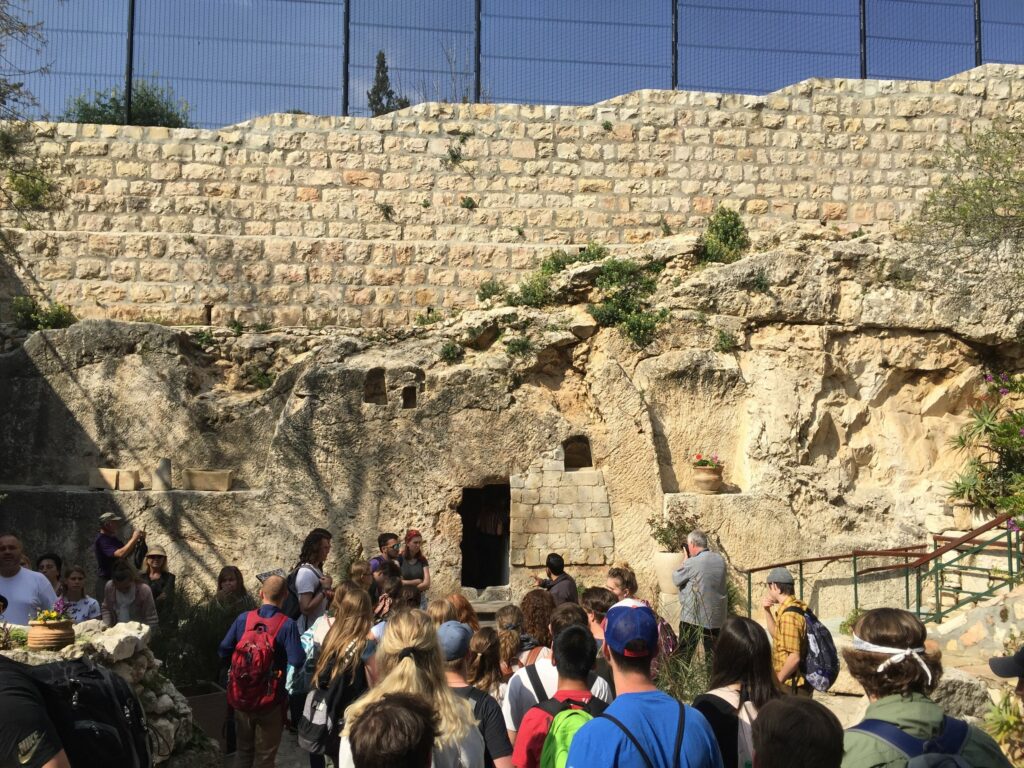
There are two possible places that the crucifixion and burial of Jesus could’ve happened. The Garden tomb and the Church of the Holy Sepulcher. I was responsible for presenting on both possible sites and I have to admit that I was pretty set on the Church of the Holy Sepulcher until our tour guide reminded me that in the Bible (Matthew 27:39) it says that “Those who passed by hurled insults at him”. I had always thought that Golgotha was on a hill, but that statement made me rethink. If Jesus was crucified on a hill then that would most likely mean that he would not of been able to hear them, so it would’ve had to be passing on the road or something. At the garden tomb there’s a place where they think Jesus was crucified at, and it wasn’t on a hill.
-Destiny Kauffman
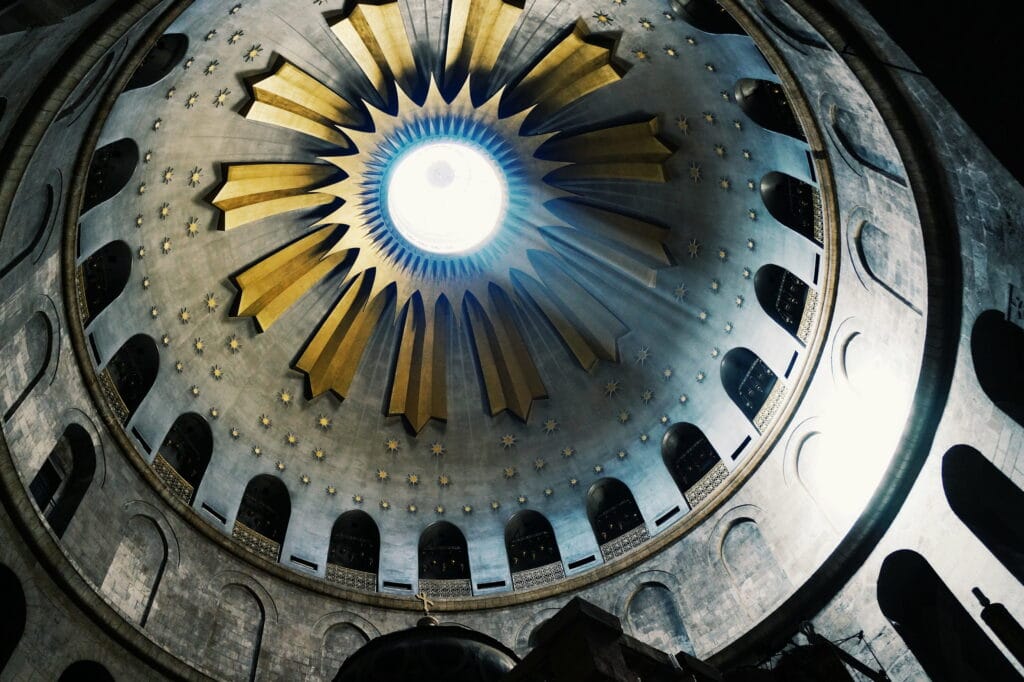
The Church of the Holy Sepulchre is a building that spans across a proposed location for two of the most significant events in the Biblical narrative of ancient Israel: Jesus’ execution on the cross, and his tomb for burial.
While archaeologists and theologians today differ in their opinions on the whereabouts of the authentic site, there are enough correlations to scripture that would qualify the Church as a plausible candidate. One distinguishing feature of the site that, having learned, has enhanced my experience in Israel, is the execution place and tomb’s distance from the gates of the city of Jerusalem. This is in accord with Hebrews 13:11-12, which reveals not only such a positioning clue, but also a symbolic meaning behind the positioning. The text reads,
The high priest carries the blood of animals into the Most Holy Place as a sin offering, but the bodies are burned outside the camp. And so Jesus also suffered outside the city gate to make the people holy through his own blood.
The Jews of ancient Israel would have recognized the spiritual parallel the Hebrew writer was trying to make. No longer would the people have to continually sacrifice animals to the pay the debt for sin against God, but instead, by God, through the power and love of Jesus, the debt was paid once and for all; a relationship not only offered to the Jews, but to the whole of mankind.
It is this kind of revelation that makes the sites within the Church of the Holy Sepulchre worth a visit—not because of any claims there may be to prove it is the place where Jesus was crucified and buried, but because its likelihood allows for the viewer to reflect on the hope passed down in the scriptures for us today, those in the past, and for generations to come.
-Debbi Celeste
